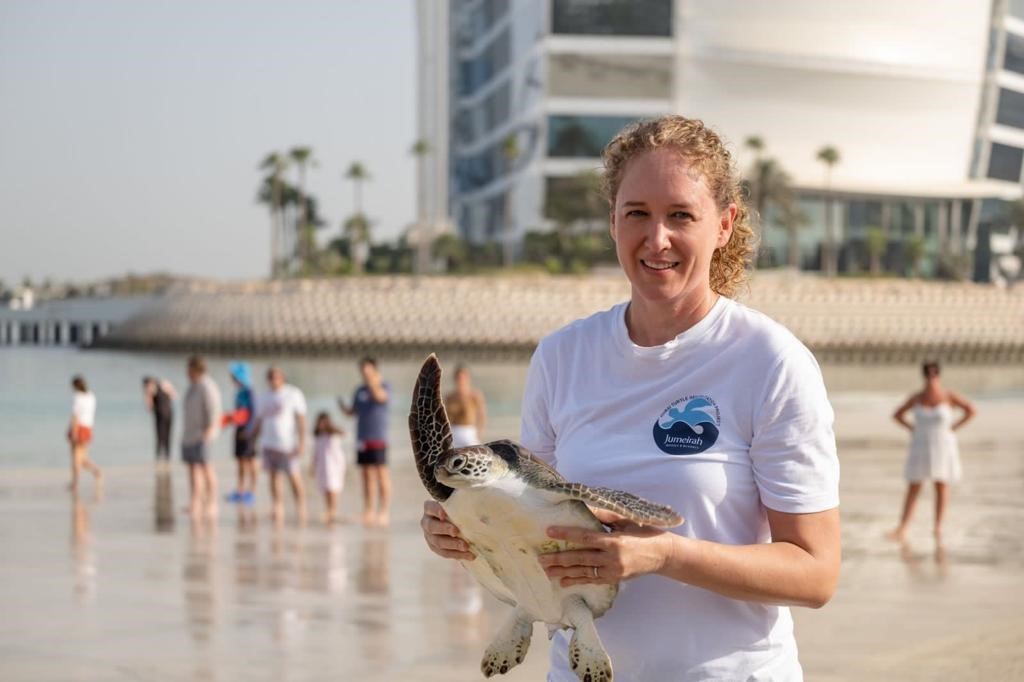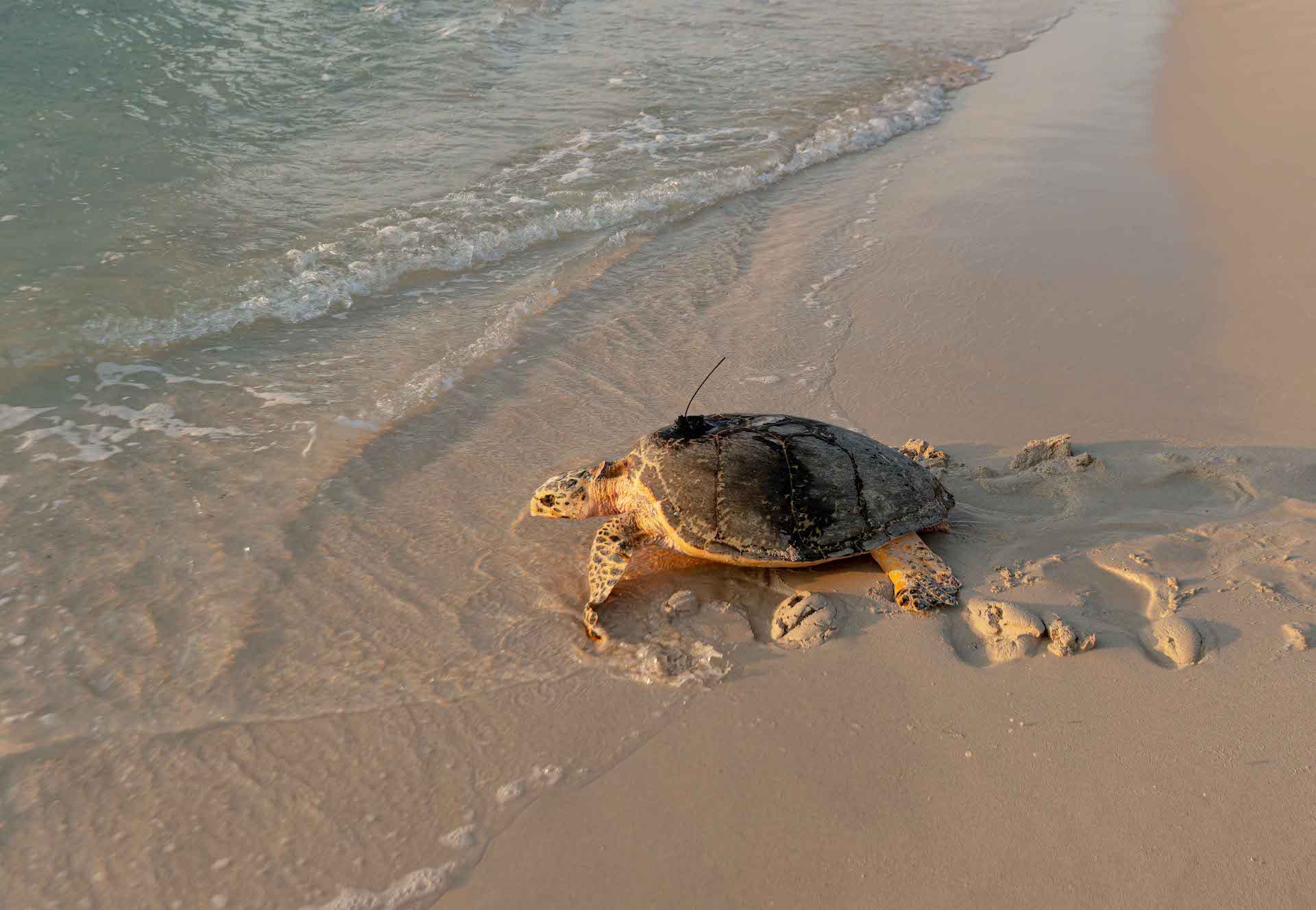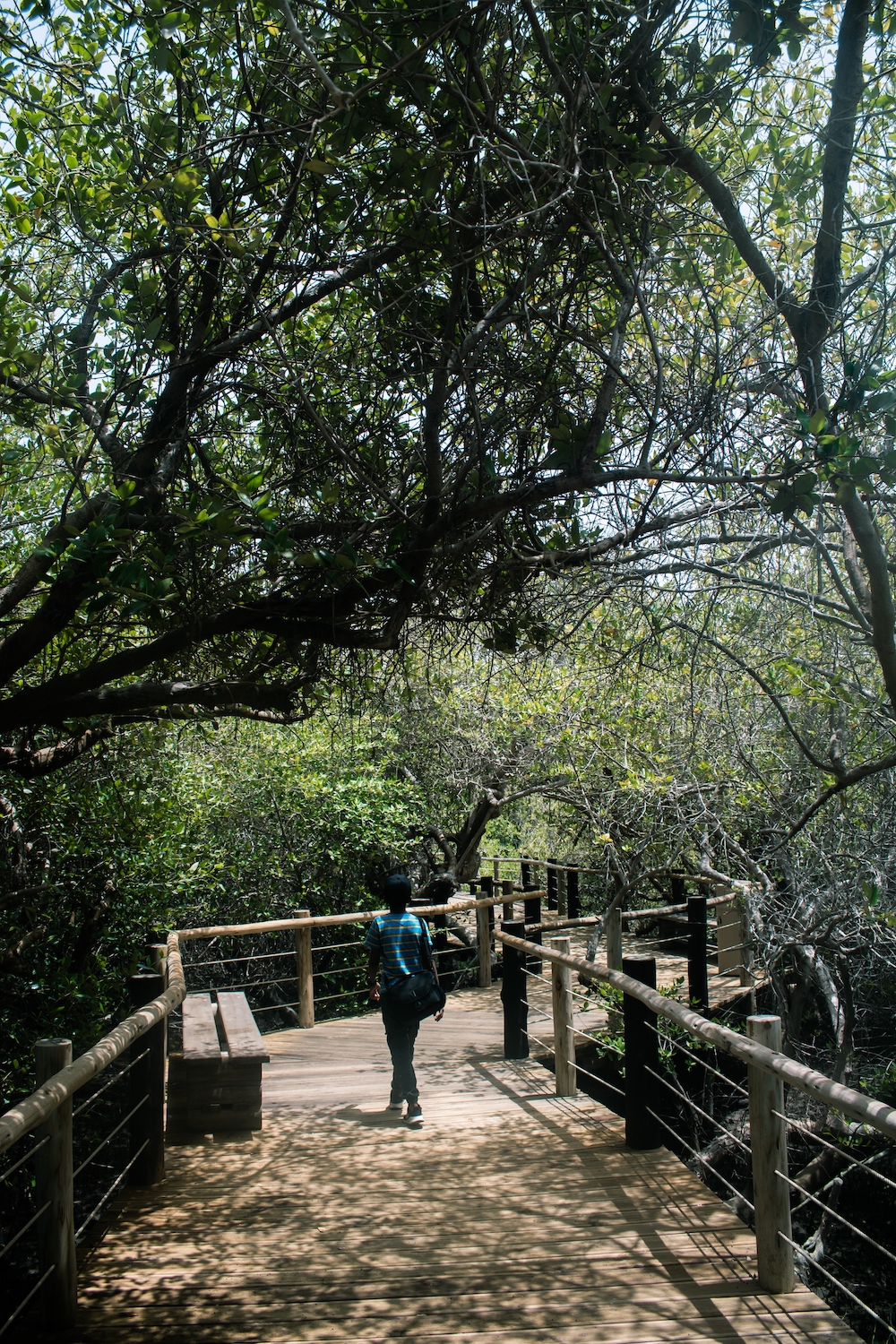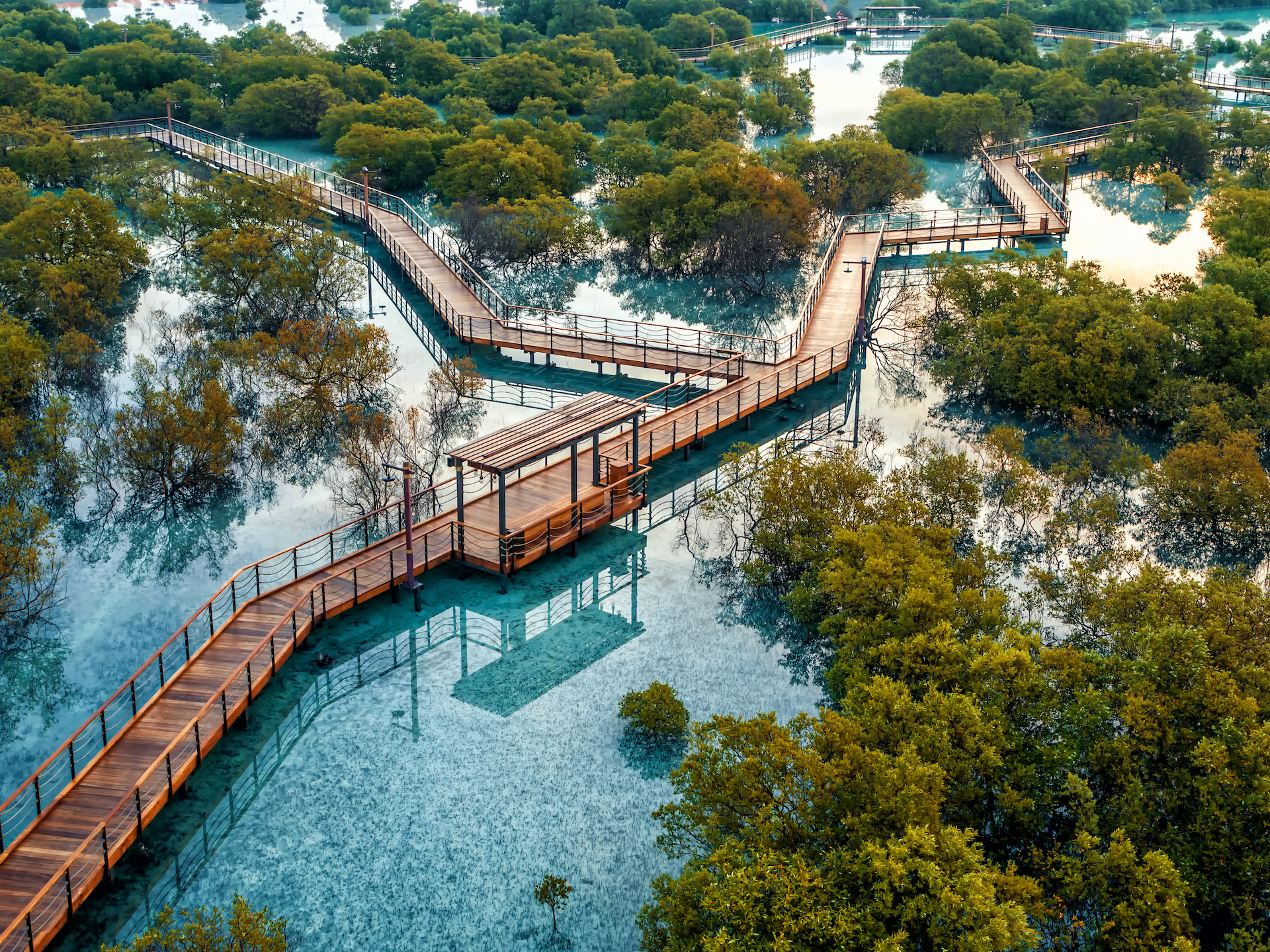Think of the United Arab Emirates (UAE), and glitzy malls, Michelin-starred restaurants and seven-star hotels usually come to mind. But this year, which the UAE has declared the Year of Sustainability, nature conservation is front of mind for the region.
Initiatives such as the National Day Mangrove Project, back in May, saw all seven Emirates commencing a mangrove-planting drive to strengthen the land’s “green lungs”, while the SeaWorld Research and Rescue – the region’s first dedicated marine research, rescue, rehabilitation and return facility – just opened its doors in late May. Meanwhile, Dubai prepares to host the UN Climate Change Conference in November.
That’s not all – turtle conservation and mangrove centres in Abu Dhabi, Dubai and Sharjah make it possible for travellers to connect with nature, even in the middle of the UAE’s glittering concrete jungles, and all with a five-star Emirati flair.
Guest turtles at Dubai’s luxury hotels
Two turtles swim leisurely in the lagoons of the Jumeirah al Naseem, the beachfront hotel adjacent to iconic luxury hotel Burj al Arab. In this sprawling property, marine turtles too are residents.
This is the Dubai Turtle Rehabilitation project of the Jumeirah Group of hotels, which rescues and rehabilitates turtles in trouble – some of which are critically endangered. Marine turtles face several threats in the Gulf, not only due to run-ins with boats and fishing nets, but also from ingesting marine plastics and abnormal barnacle growth.

“We feed and tend to them, stitch back the carapaces that have been damaged by boat collisions and eventually, when they are fully fit, release them into the sea,” explains Barbara Lang-Lenton, director of the Jumeirah Group-funded project. “What we do here has a global impact because sea turtles are migratory species. After they’re released at Jumeirah al Naseem, they go on and travel the world and do what they need to do.”
It’s crazy to think that there are more guests in the Jumeirah hotels at the moment than there are hawksbills in the wild
The lagoon has several recovering individuals destined for such a globetrotting life, as well as three permanent residents – Chewbacca, named because of many blistering barnacles on its carapace; Humpty, whose carapace is humped because of an old injury; and Dumpty, the friendliest of the three. Unfit to return to the sea, these three live the high life in Jumeirah. Everyday at 11am, visitors help feed them salad and fish while listening to Lang-Lenton share about the project.
Interacting with the rescued turtles and watching them be released into the sea has a profound impact on visitors, Lang-Lenton shares. “It’s crazy to think that there are more guests in the Jumeirah hotels at the moment than there are hawksbills in the wild,” she recalls one of them saying.

Sun, sand and Sharjah’s mangroves
For those planning to venture beyond Dubai, the Khor Kalba Mangrove Centre in Sharjah is a two-hour drive east from downtown, on the opposite coast (Dubai taxis and the rideshare app Careem offer competitive rates). This mangrove park is part of the Khor Kalba Conservation Reserve, which also encompasses the Khor Kalba Bird of Prey Centre, home to falcons, the Al Hefaiyah Mountain Conservation Centre, ideal for scenic hikes; and the Al Hafiya Picnic Park. The reserve only began welcoming guests once more in 2021, after being closed to the public for 10 years. Its lush ecosystem is home to diverse wildlife, including white-collared kingfishers and the majestic oryx – large antelopes with long, spear-like horns.
The sounds of traffic and construction, so ubiquitous in the UAE, fade as you enter the mangrove forest. A raised boardwalk offers intimate glimpses inside the mangroves and the plethora of unusual creatures they provide habitat for – mangrove crabs, sea cucumbers, starfish as well as snapping shrimp, tiny creatures whose oversized claws create shockwaves that sound like fireworks. We linger in the shade of the mangroves, mesmerised by the salt crystallising on the swirls of sand and sightings of mudskippers that dart around the sandy forest floor.
Mangroves, or qurm in Arabic, make up almost 96 miles of the UAE’s coastline. Of the UAE’s 13 key mangrove sites, Khor Kalba is also a designated Ramsar site, a wetland recognised for its international importance. This boardwalk through these 300-year-old salt-encrusted mangroves, is but one way to experience these vital “green lungs” of the city – visitors may also kayak or paddle-board along the exterior of the mangrove forests through organised tours.

Golden hour in Abu Dhabi’s Jubail Mangrove Park
As the golden hour approaches, we head to Abu Dhabi’s Jubail Mangrove Park. A striking distance from the far more famous Louvre Abu Dhabi, the dense forest stretches for miles on end, and seems like another world altogether. A boardwalk over a mile long takes us deep into the forest, where pristine waters glitter and fresh shoots poke out from the sand.
This is a hopeful sign as mangroves are not easily restored once they deteriorate. Without their roots to anchor the soil, the tides quickly erode the land and reshape the coastline, making it difficult, if not impossible for them to regenerate. In winter and spring, there are regular planting drives where visitors can plant mangrove seedlings, to extend the forest cover as much as possible.

These ecosystems offer a host of benefits to Abu Dhabi and the UAE as a whole, including carbon sequestration, coastal protection, biodiversity support and water quality improvement. All this goes a long way towards contributing to the overall health of the environment and UAE coastline.
“UAE’s mangroves are that much more interesting because you don’t expect to see them here,” points out Dr Percy Fernandez, passionate wildlife photographer and head of the School of Media and Communication at Manipal University. A regular birder in the UAE since 2017, Fernandez notes an uptick in the number and diversity of bird sightings here over the past five years – as well as a simultaneous increase in number of bird-watchers.
“We’ll now see summer migrants like the Eurasian turtle dove and the blue-cheeked bee-eater, which come here to breed from May to June,” he says. According to the UAE bird checklist, the country recorded 300 species till the early 90s. Today, there are 468, of which 68% are migratory.


“Much of this is thanks to the UAE’s initiatives to develop freshwater lakes and canals, and increase green cover by planting trees and conserving the mangroves,” he says. “This has not only been great for the environment, but has also given locals and visitors alike a beautiful, wild respite from the city.”
Back on the highway to Dubai from Jubail, the lights of Abu Dhabi’s busy airport twinkle in the distance. Construction cranes, so ubiquitous across the UAE, ply back and forth, signifying the birth of yet another plush – and mangrove-facing – real estate development.
From the road, we spot kayakers heading back to the shore, their torch casting a spotlight on the still water. Then it dims and fades, and night comes gently to the lush estuary.
To learn more about Singapore Airlines’ flight service to Dubai, visit the official website.
The post Conservation in the concrete jungle: Walking on Dubai’s wild side appeared first on SilverKris.
from SilverKris
No comments:
Post a Comment